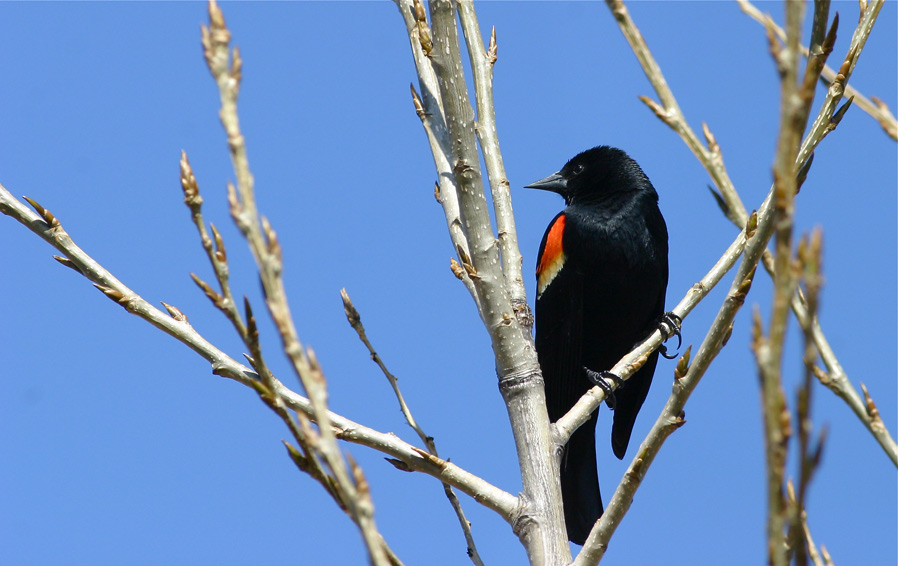

A male red-wing checks out a territory in Woodbine Park March 18. Only the males have returned so far. © BCP 2010
A little late in putting up this post (so much to do, so little time), but wanted to share this great spring news anyway. The boys — that is to say, the male red-wing blackbirds ) — came back last week from the sunny south where they spent the winter. Likely Mexico, Central America or the southern U.S.
Where are the girls, you might ask. Seems the males of the species Agelaius phoeniceus return from migration earlier than the females, and leave later. Judging from the volubility of the cries of the males I heard in Woodbine Park and Ashbridge’s, I’m guessing the males come back early to stake out a cattail, bush or tree to call home. Once house-keeping has been set up, voila! Time for the females to come back and pick a favoured mate.
(Male red-wings apparently must have pretty fancy houses, as they are polygynous. They commonly have two to four females as mates, and can have as many as 15. Sounds like the Bountiful, B.C., of the bird world.)
Bird-lovers, professional and amateur alike, take the return of the red-wing very seriously, and keep track to the day of where they are first seen. There is a fascinating website called Journey North that explores the interrelated aspects of seasonal change that tracks the return migration of many species, including red-wings, with charts and maps. The site invites everyone to participate by reporting backyard observations.
During migration, redwings travel in huge flocks, often alongside other blackbirds, which explains the genus part of their scientific name. Agelaios is Ancient Greek meaning “belonging to a flock.” The species name, phoeniceus, is from the Latin word meaning “deep red.” (Thanks, Wiki.)
I’ll keep watching to see when the girls return.
© BCP 2010


3 comments